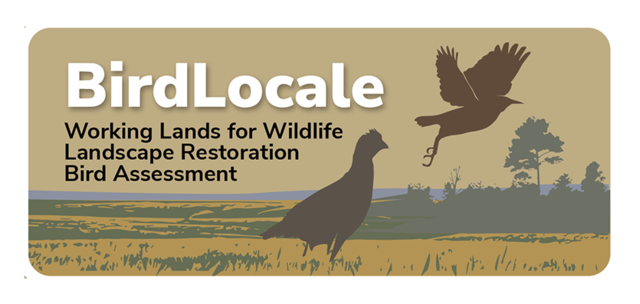-
 Probability of Presence for Crayfish
Probability of Presence for Crayfish
-
by
Jessica Rhodes
—
published
Mar 11, 2016
—
filed under:
Cave and Karst,
AppLCC Funded,
Map Products,
Caves,
Karst
This map depicts the probability of presence for species within the crayfish group throughout the Appalachian LCC region. Red areas have the highest probability of presence.
Located in
Projects
/
…
/
Gallery: Cave and Karst Maps
/
Probability of Presence by Species Group
-
 Probability of Presence for Fish
Probability of Presence for Fish
-
by
Jessica Rhodes
—
published
Mar 11, 2016
—
filed under:
Cave and Karst,
AppLCC Funded,
Map Products,
Caves,
Karst
This map depicts the probability of presence for species within the fish group throughout the Appalachian LCC region. Red areas have the highest probability of presence.
Located in
Projects
/
…
/
Gallery: Cave and Karst Maps
/
Probability of Presence by Species Group
-
 Probability of Presence for Ground Beetles
Probability of Presence for Ground Beetles
-
by
Jessica Rhodes
—
published
Mar 11, 2016
—
filed under:
Cave and Karst,
AppLCC Funded,
Map Products,
Caves,
Karst
This map depicts the probability of presence for species within the ground beetle group throughout the Appalachian LCC region. Red areas have the highest probability of presence.
Located in
Projects
/
…
/
Gallery: Cave and Karst Maps
/
Probability of Presence by Species Group
-
 Probability of Presence for Millipedes
Probability of Presence for Millipedes
-
by
Jessica Rhodes
—
published
Mar 11, 2016
—
filed under:
Cave and Karst,
AppLCC Funded,
Map Products,
Caves,
Karst
This map depicts the probability of presence for species within the millipede group throughout the Appalachian LCC region. Red areas have the highest probability of presence.
Located in
Projects
/
…
/
Gallery: Cave and Karst Maps
/
Probability of Presence by Species Group
-
 Probability of Presence for Pseudoscorpions
Probability of Presence for Pseudoscorpions
-
by
Jessica Rhodes
—
published
Mar 11, 2016
—
filed under:
Cave and Karst,
AppLCC Funded,
Map Products,
Caves,
Karst
This map depicts the probability of presence for species within the pseudoscorpion group throughout the Appalachian LCC region. Red areas have the highest probability of presence.
Located in
Projects
/
…
/
Gallery: Cave and Karst Maps
/
Probability of Presence by Species Group
-
 Probability of Presence for Spiders
Probability of Presence for Spiders
-
by
Jessica Rhodes
—
published
Mar 11, 2016
—
filed under:
Cave and Karst,
AppLCC Funded,
Map Products,
Caves,
Karst
This map depicts the probability of presence for species within the spider group throughout the Appalachian LCC region. Red areas have the highest probability of presence.
Located in
Projects
/
…
/
Gallery: Cave and Karst Maps
/
Probability of Presence by Species Group
-
 Probability of Presence for Springtails
Probability of Presence for Springtails
-
by
Jessica Rhodes
—
published
Mar 11, 2016
—
filed under:
Cave and Karst,
AppLCC Funded,
Map Products,
Caves,
Karst
This map depicts the probability of presence for species within the springtail group throughout the Appalachian LCC region. Red areas have the highest probability of presence.
Located in
Projects
/
…
/
Gallery: Cave and Karst Maps
/
Probability of Presence by Species Group
-
 County Occurrence Map for Rafinesque’s Big-eared Bat
County Occurrence Map for Rafinesque’s Big-eared Bat
-
by
Jessica Rhodes
—
published
Mar 11, 2016
—
filed under:
Bat,
Cave and Karst,
AppLCC Funded,
Map Products,
Caves,
Karst
Distribution map of counties with a cave/mine occurrence for Rafinesque’s big-eared bat (Corynorhinus rafinesquii) within the Appalachian LCC region.
Located in
Projects
/
…
/
Gallery: Cave and Karst Maps
/
Bat Records by County
-
 County Occurrence Map for Virginia Big-eared Bat
County Occurrence Map for Virginia Big-eared Bat
-
by
Jessica Rhodes
—
published
Mar 11, 2016
—
filed under:
Bat,
Cave and Karst,
AppLCC Funded,
Map Products,
Caves,
Karst
Distribution map of counties with an occurrence for Virginia Big-eared Bat (Corynorhinus townsendii virginianus) within the Appalachian LCC region.
Located in
Projects
/
…
/
Gallery: Cave and Karst Maps
/
Bat Records by County
-
 County Occurrence Map for Big Brown Bat
County Occurrence Map for Big Brown Bat
-
by
Jessica Rhodes
—
published
Mar 11, 2016
—
filed under:
Bat,
Cave and Karst,
AppLCC Funded,
Map Products,
Caves,
Karst
Distribution map of counties with a cave/mine occurrence for big brown bat (Eptesicus fuscus) within the Appalachian LCC region.
Located in
Projects
/
…
/
Gallery: Cave and Karst Maps
/
Bat Records by County


